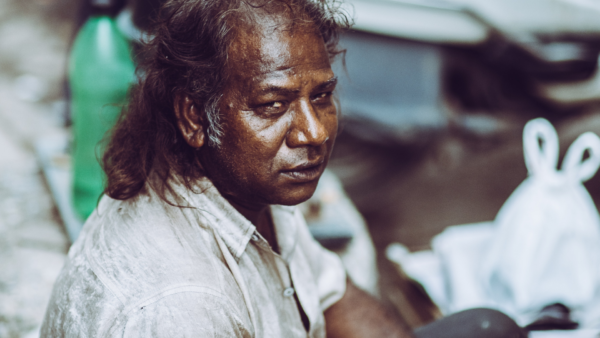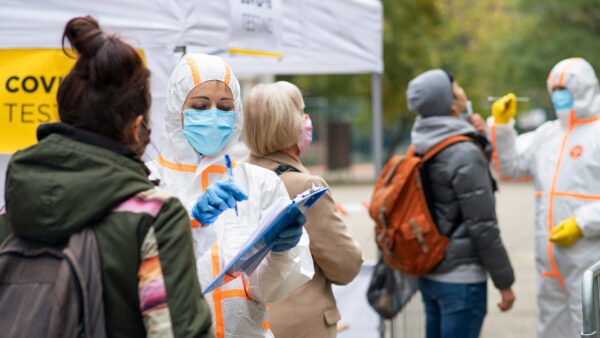Widespread COVID-19 testing could prove pivotal in economic recovery
Access to global COVID-19 testing has been at the fore of the global debate regarding the best approach to tackle the ongoing pandemic which continues to leave a trail of destruction across human livelihood and the global economy. There is not a single sector, industry, country, or individual to have escaped some form of impact in the wake of this vicious virus. Though the question remains, why some more than others? The virus does not discriminate against the rich or poor, the private or public sector, the Europeans or the Americans, the Asians or the Africans, yet some pockets of the world have been able to minimise the damage to their economy and slow the rate of infections far better than others. Could the answer lie in their urgency to place mass testing at the forefront of their damage limitation strategy and could the accessibility of mass testing help curb the snowballing economy which threatens to plummet beneath the depths of even the great depression of the 1930’s?
The International Monetary Fund (IMF) has described the global decline of the economy as the worst in recent history, plunging the world into a ‘crisis like no other’. The UK economy is predicted to shrink by 6.5% in 2020, compared to the IMF’s January forecast of 1.4% GDP growth. The US economy is expected to contract by 5.9% this year, representing the biggest annual decline since 1947. The Chinese economy is expected to expand by just 1.2% this year, the slowest growth since 1976 and Australia is staring the prospect of its first recession since 1991, straight in the face.
There are global case studies to suggest that widespread testing may have limited the damage to the economy had it been made available earlier in the UK. South Korea for example received global praise for swiftly making tests available early in their fight against the pandemic, a decision which saw more than 390,000 people tested by the beginning of April. In doing so, they were able to keep Asia’s fourth-largest economy humming by identifying and tracking cases without imposing major mandatory lockdowns or requiring businesses to keep employees at home. Despite having the highest number of cases outside of China at the time, they were able to keep factories running to a large degree meaning the economy could tick over, hurt but not knee bound. The trick? Keeping those who had been tested and cleared working and those who had been tested and proved positive at home. Not only did this enable businesses to remain in operation, it also helped to rapidly flatten the curve.
Just recently, India, the world’s largest democracy, begun the world’s biggest vaccine drive, with the aim of inoculating its 1.3 billion people with the vaccine. The country aims to vaccinate 300 million of its citizens by early August. That is more than the entire population of the UK, Japan, and South Korea combined. The ambitious plan launched by India’s Prime Minister, Narendra Modi, comes following the news that India has recorded the second-highest number of Covid-19 infections in the world after the United States. This move is crucial in securing a more prosperous future for India, as rolling out the vaccine at an affordable rate for its citizens will prevent the increase of a black market or see thousands leave the country to get vaccinated overseas, hindering the country’s chance for progress.
It is these factors that will only give India some serious economic momentum in the latter stages of the year as businesses will be able to open, people return to work, and consumer spending increases. This is likely to stave off the threat of recession in India. As stocks rally and production resumes on this optimism, the economy will rise in what will bring some much-needed relief as the strain of the pandemic eases. If the country’s vaccine rollout brings about the results expected, India could be used as the blueprint for widespread testing.
Leading doctors in the UK have urged the government to follow the antibody testing regime used in South Korea so that the country can begin working towards a lockdown exit strategy. The UK government took a different approach at the beginning of the crisis, using a smaller number of labs and keeping more control centrally. There have been suggestions it did not act quickly enough, as countries such as Germany and South Korea did. They rapidly stockpiled kits and made tests available to a much larger number of labs. At first, Public Health England was only using eight of its own labs before expanding to a further 40 NHS sites. It was only at the end of March that the government committed to recruiting more labs from universities, research institutes, and private companies.
Though hindsight is a wonderful, yet painful thing, access to wider more accessible, and cost-effective testing could have seen us follow the path of the countries who have better contained the virus, as opposed to the current crash collision we are on with the realisation that we could well be the worst-hit country in Europe come to the end of this.

The good news is, the UK government has set a bold target of 100,000 coronavirus tests a day by the end of April. Though at the time of writing we are seeing just 16,000 a day two weeks prior to the end of the month, we have to take this as a positive sign that sooner rather than later mass testing will become a reality and the lockdown measures will be eased – allowing some industries to begin contributing towards kickstarting the global economy. By scaling up two types of tests—PCR tests that detect the active presence of virus and serology tests that detect immune system responses to being infected by the virus—population screening could identify those who are currently infected and those who have recovered and are likely not to pass along the virus to others. Frequent large-scale testing would enable those who test positive to withdraw for a period of self-isolation, thus easing the pressures to keep a nationwide blanket lockdown in place for an extended period of time.
The health of the economy likely also relies on other test-related factors. One is speed. A test that takes days or even a week to complete is far less useful than a test that gives results in 45 minutes. The latter allows those who test negative to return to work quicker, obviously. The second, more important factor is accuracy. False tests could see us in a far worse position than the one we are already in, should spreads pick up again.
We are currently in limbo here in the UK. The country entered the third lockdown at the start of January following another brief period of restrictions and shutdowns which failed to curb the rising infection rates. With no set date as to when the latest period will end, there are many uncertainties that may lie ahead. We are fed with the positive news during briefings that tests will soon be as easy to come by as a pint of milk in pre-COVID-19 days, but logic would suggest that the 100,000 a day target is farfetched, and with the likes of India pushing ahead with its plans for recovery with its vaccination rollout, it is crucial that the UK does not fall behind. What we can do for now is hope. Hope for widespread testing to be available and accurate in the coming weeks, to enable a safe exit strategy from the lockdown period to allow businesses to begin operating as ‘normal’ as feasibly possible during these times. Here we will see that the accessibility of testing could well give our economy the lifeline it is crying out for.










